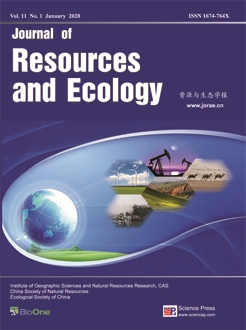This study investigates the spatial differences and the factors influencing those differences as they affect forest transitions in the Qian-Gui Karst Mountain areas to provide references for policy makers, and ideas for ecological environmental protection strategies and adaptive management strategies for forest restoration projects in mountain areas. Forest transition characteristics are determined in relationship to spatial and functional transitions. SPSS and a geographical detector are used to analyze the forces driving forest transitions in terms of natural environmental and socio-economic factors. The results were as follows: (1) The area of forestland in the Qian-Gui Karst Mountain areas increased by 673.5 km2 during 1990–2015, and a U-shaped curve generally describes the tendency of this change. More precisely, forest land area decreased initially and increased later, with the turning point occurring in the year 2000. This suggests that the Qian-Gui Karst Mountain areas are being maintained at a later stage of forest transition, and this means they are experiencing a net increase in forest land area. The average annual rainfall and temperature, distance to the nearest river and nearest rural residential area, amplitude of topographical relief, and slope contributed the most to forest spatial transitions. (2) During the study period, the tendency for forest coverage to change varied considerably in different parts of the study area, and the greatest increase occurred in the area of very high forest coverage, an area of 154173.71 km2. The ranking of other forest coverages tended to decrease during the past 25 years. The vegetation ecosystem, in general, is being maintained in the process of restoration, and changes in the ranking of forest coverage were high in the northern part of the study area and low in the southern part. Forest spatial transitions were affected by the interaction between natural environmental and socio-economic factors, and the average annual temperature and rainfall, elevation, and lighting intensity at night were the most important factors that governed forest functional transitions. An examination of the direction in which spatial and functional transitions are moving in the forest area indicates that ecological construction, rather than spatial expansion of the forest area, should be used in the future to improve forest quality.
How to translate text using browser tools
27 January 2020
Forest Transition and Its Driving Forces in the Qian-Gui Karst Mountainous Areas
Zhao Yuluan,
Ren Hongyu,
Li Xiubin
ACCESS THE FULL ARTICLE
forest transition
geographical detector
logistic regression analysis
Qian-Gui Karst areas





